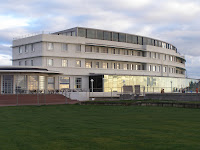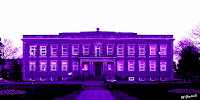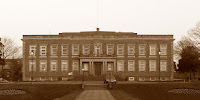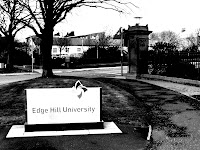
 This is my grandson Connor. It was taken a couple of days ago and although it looks like a portrait I am still going to mention the theme of photographers as historians. It may look like a happy child with an Easter egg (and it is) but it is also an historical document because it says that children had Easter eggs in 2009. Well do you know when Easter eggs started? It is also an idea for any photograph to use a prop.
This is my grandson Connor. It was taken a couple of days ago and although it looks like a portrait I am still going to mention the theme of photographers as historians. It may look like a happy child with an Easter egg (and it is) but it is also an historical document because it says that children had Easter eggs in 2009. Well do you know when Easter eggs started? It is also an idea for any photograph to use a prop.A photographer friend of mine told me that hands are important in portraits. He told me that hands tell you about the character of the person. You can see Connor's hands but I think in this case the character comes from the face. I would think that hands are more important as a link to your character as you get older. However the point I am making is that character can also come from props. How does the person relate to the prop? Does the prop relate to their work or their interest? Does it show their character? I know that I have mentioned sepia and vignette before, but I'll mention them again with the photo on the right if only because Connor is a great subject.
Alright I will come clean. Connor isn't eating chocolate yet but I still like the use of the prop and it makes the title of this blog a bit arty.
Happy snapping

























